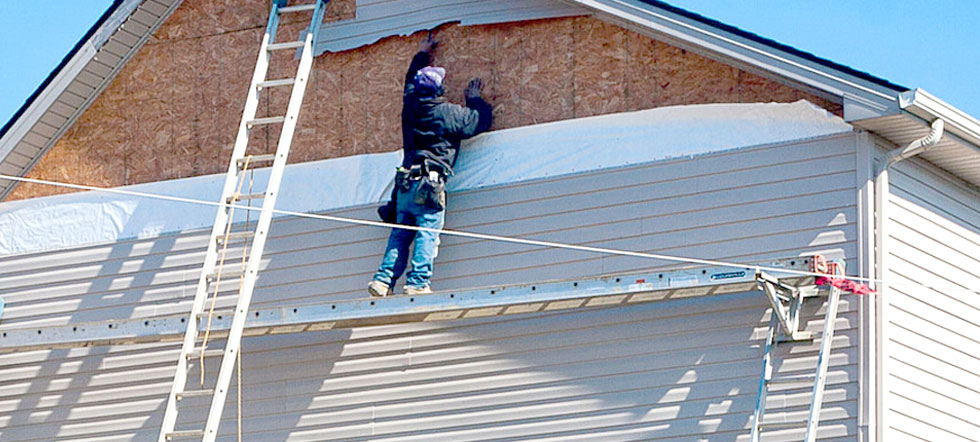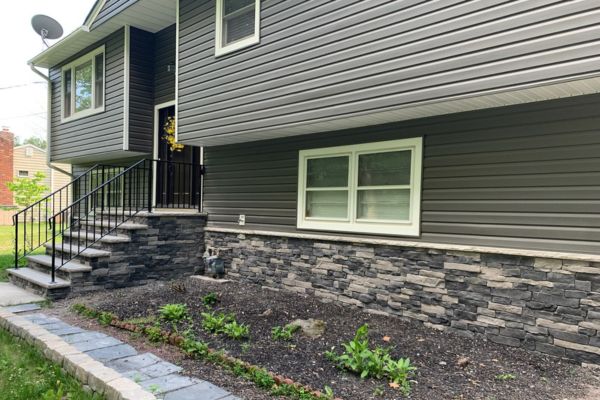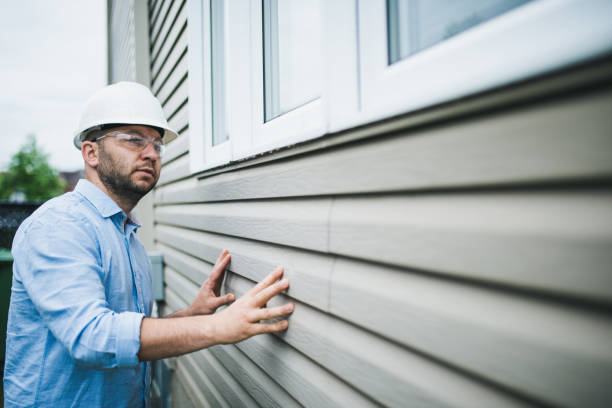The Essential Guide to the Numerous Types of House Siding and Their Distinct Advantages
In the realm of home enhancement, picking the right home siding is an essential choice that impacts both visual allure and useful performance. The variety of materials readily available, such as wood, vinyl, fiber block, concrete, and steel, each offer one-of-a-kind benefits that accommodate different demands and preferences. Recognizing these differences can substantially improve the durability and worth of a home - morris siding contractor. With so numerous choices to take into consideration, which exterior siding product absolutely stands out for your particular project? Exploring these selections can lead to informed choices that line up with both style and functionality.
Wood Siding
Timber house siding, a popular option for domestic outsides, offers a timeless aesthetic that incorporates natural elegance with structural stability. This siding material is readily available in numerous designs, including clapboard, roof shingles, and board-and-batten, enabling house owners to customize their façade to match their design preferences. Timber house siding is usually crafted from durable species such as cedar, redwood, or ache, which are known for their strength and capability to withstand ecological stressors.
Among the primary advantages of wood house siding is its excellent insulation buildings, which can add to power effectiveness and lower heating prices. In addition, timber home siding is biodegradable, making it an eco-friendly alternative when sourced sustainably. Normal upkeep, consisting of painting or discoloration, can extend its lifespan and improve its look, allowing homeowners to maintain the all-natural appeal of the timber.
Nonetheless, prospective downsides consist of sensitivity to parasites, rot, and weather condition damage, necessitating ample treatment and upkeep - morris siding contractor. Regardless of these problems, when properly cared for, wood house siding can supply a sturdy and gorgeous option that boosts the personality of a home while offering a cozy, welcoming environment

Vinyl House Siding
Vinyl house siding has arised as a leading choice for home owners seeking a low-maintenance outside alternative that incorporates toughness and affordability. This versatile material is crafted from polyvinyl chloride (PVC), making it resistant to various weather condition problems, including wetness and UV rays. Therefore, plastic exterior siding does not warp, rot, or fade, making certain resilient visual appeal.
Among the primary benefits of vinyl siding is its comprehensive array of designs and colors, enabling homeowners to achieve the desired look for their residential or commercial property without the requirement for constant repainting. In addition, plastic exterior siding is simple to mount, which can significantly reduce labor costs during building and construction or remodelling projects.
Vinyl exterior siding also contributes to power performance. Several choices function insulation backing, which enhances thermal performance, helping to keep comfortable interior temperature levels and potentially reducing energy expenses. Its smooth surface area promotes easy cleansing, calling for just regular washing with a yard pipe to eliminate dirt and debris.
Fiber Cement Siding
Fiber concrete siding has actually obtained traction among building contractors and house owners alike due to its impressive combination of toughness and aesthetic convenience. Composed of a mix of sand, cellulose, and concrete fibers, this exterior siding alternative is engineered to hold up against extreme weather problems, including high winds, heavy rain, and temperature changes, making it a long-lasting selection for domestic exteriors.

Among the key benefits of fiber concrete house siding is its resistance to parasites, such as termites, and its non-combustible nature, offering enhanced fire safety and security. morris siding contractor. In addition, it is offered in a broad selection of styles, shades, and textures, allowing house owners to accomplish their preferred visual without giving up performance
An additional benefit is its reduced upkeep demands; fiber concrete siding usually calls for painting or discoloration every 5-10 years, which is much less regular than other materials. Its longevity contributes to a lower general cost of ownership, as it minimizes the requirement for frequent fixings or replacements.
Inevitably, fiber cement exterior siding represents an outstanding investment for those seeking a resilient, appealing, this page and functional outside alternative, integrating both type and feature to improve the home's curb charm.
Metal House Siding
The allure of steel home siding lies in its robust toughness and modern visual appeal, making it a preferred selection for contemporary architecture. Available in materials such as aluminum and steel, metal exterior siding provides a range of colors and coatings, permitting home owners to accomplish a tailored look that complements their layout vision.

Power effectiveness is another significant benefit, as several steel siding products are designed with insulation options that help regulate indoor temperatures. This can lead to reduced energy costs with time. Furthermore, metal exterior siding is commonly recyclable, making it an eco pleasant option for sustainability-minded house owners.
The setup process for steel house siding can be reasonably uncomplicated, leading to a quicker turnaround time for construction projects. On the whole, steel house siding incorporates performance and style, making it a practical alternative for Find Out More those looking for a visually enticing and enduring exterior coating.
Brick and Stone House Siding
Block and rock house siding sticks out as an ageless selection that boosts the aesthetic beauty of any kind of home. Understood for their toughness and low upkeep, these materials offer an extraordinary roi while boosting the home's curb allure. Offered in numerous colors, textures, and patterns, brick and rock can be tailored to suit varied building designs, from conventional to modern-day.
Among the main benefits of block and stone house siding is their energy effectiveness. Both products have natural protecting residential properties that assist regulate indoor temperature levels, possibly reducing heating and air conditioning expenses. In addition, they offer exceptional fire resistance contrasted to various other house siding options, adding to improved security.
One more advantage is their durability. Brick and stone can last for years, often needing minimal maintenance past occasional cleaning. Unlike timber home siding, they are resistant to bugs and rot, making sure a durable outside that withstands the aspects.
Verdict
In recap, the selection of siding dramatically affects a home's aesthetic allure, energy performance, and maintenance requirements. Each kind of exterior siding-- whether timber, vinyl, fiber concrete, block, or metal and stone-- supplies distinct advantages tailored to numerous property owner choices and environmental problems.
One of the primary advantages of wood home siding is its excellent insulation homes, which can add to energy performance and lower heating prices. Additionally, timber siding is naturally degradable, making it an eco friendly alternative when sourced sustainably.One of the primary benefits of steel siding is its resistance to different ecological factors.Energy effectiveness is an additional significant advantage, as lots of steel siding products are created with insulation alternatives that help control check this site out interior temperature levels. Each kind of siding-- whether wood, plastic, fiber metal, concrete, or block and rock-- supplies unique benefits tailored to various house owner choices and ecological problems.